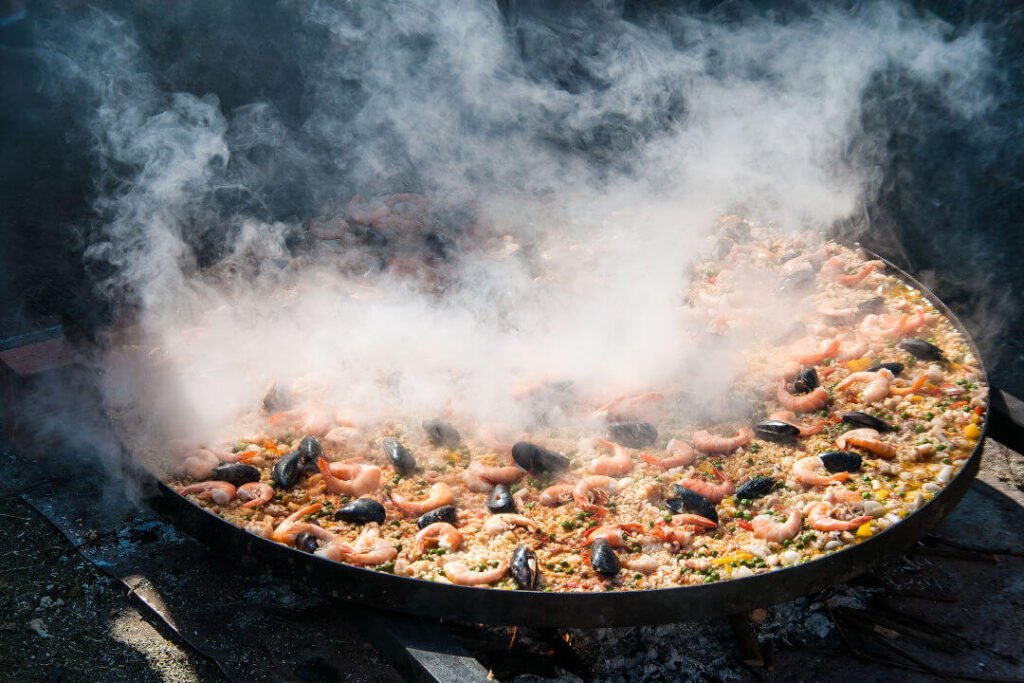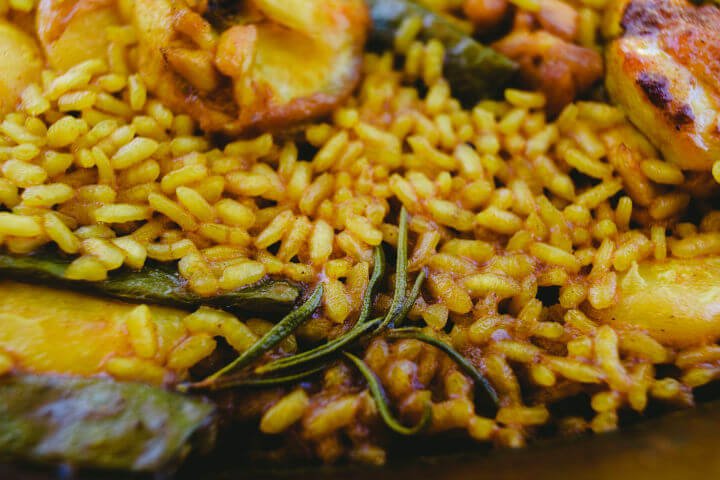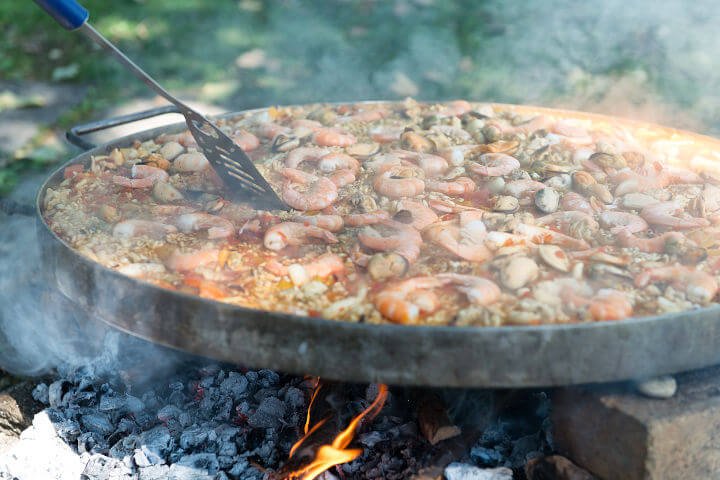
Paella, an iconic dish in Spanish cuisine, is much more than just rice and seafood. Its exquisite flavor is the result of a perfect combination of ingredients that bring unique nuances to this delicious recipe. From aromatic spices to fresh ingredients from both the sea and the land, each element awakens the senses and melds flavors into a culinary feast that has transcended borders.
Let’s explore together which ingredients are responsible for the unmistakable and delightful taste that characterizes paella.
The importance of broth
The broth stands as a fundamental component in the making of paella, playing a pivotal role in infusing the dish with essential flavors. Typically, it comprises a blend of ingredients such as onions, garlic, carrots, parsley, and sometimes, chicken, fish, or seafood bones.
This aromatic blend contributes depth to the dish, as the rice absorbs these flavors during the cooking process.
The broth functions as a vehicle for merging all the diverse tastes of the paella. It is typically slow-cooked, allowing the ingredients to release their flavors and create a rich and complex base that permeates each grain of rice.
A well-seasoned broth is crucial to intensify the overall flavors of the paella.
Aside from flavor, the broth plays a critical role in determining the texture of the paella. A well-prepared broth, when uniformly absorbed by the rice during cooking, ensures the dish achieves the characteristic texture, neither excessively dry nor overly soupy.
The nature of the broth used in paella can vary depending on regional preferences or individual cooks. Some may opt for fish-based broths for seafood paellas, while others might prefer meat or vegetable broths for mixed or vegetarian paellas. This adaptability allows the dish to be tailored to suit diverse tastes and dietary restrictions.
Quality is a decisive factor when it comes to the broth. Homemade broths crafted from fresh ingredients often impart a more authentic and intricate flavor to the dish. Nonetheless, high-quality commercial broths can also be used if prepared and applied appropriately.
The broth stands as a cornerstone in creating the paella, not just for its flavor contribution, but also for its influence on texture and the overall sensory experience. Careful attention to ingredients and the preparation of the broth is essential to achieve an outstanding paella.
Ingredients and herbs that determine the flavor of paella

Essential ingredients and herbs play a fundamental role in creating the unmistakable flavor of paella. This mixture of elements is cooked in the same paella pan, allowing their flavors to intertwine and enhance each other.
Once the ingredients are sautéed, releasing their distinctive flavors, water, or in some cases, broth, is incorporated, along with a variety of herbs. It is in this process where the paella pan becomes a melting pot of flavors, with each ingredient contributing to enrich the liquid with its nuances.
Once the liquid has absorbed and amalgamated all the flavors, the rice is added to the paella pan. As the rice absorbs this aromatic liquid, it acquires the nuances and essences of each ingredient, giving the entire paella with its specific character and flavor.
In an authentic Valencian Paella, with its traditional ingredients such as chicken, rabbit, beans and saffron, it is precisely these elements that determine its distinctive flavor. On the other hand, when making a seafood paella using a broth made from seafood, it is these flavors that are impregnated into the rice, giving the paella its delicious marine touch.
Often, when serving paella, it is often sprinkled with a few drops of lemon, which also adds citrus nuances to the dish. However, in the case of a great paella, it is often not necessary to add lemon, as the flavors are already complex and satisfying on their own.
The smoky flavor of wood or charcoal

In addition to the ingredients used, the flavor of paella can be significantly influenced by the heat source used during its preparation. Cooking paella over a wood fire, for instance, imparts a distinct and subtle smoky flavor to the dish.
This method, by exposing the paella pan directly to the flames, allows the wood smoke to infuse the dish, adding an additional dimension to its flavor profile.
Similarly, when cooking paella on a charcoal barbecue, especially if the lid is placed after adding the rice, it creates an environment that retains the charcoal smoke. This smoke retention enhances the flavor of the dish, incorporating smoky nuances that permeate the rice and ingredients.
The choice between wood or charcoal for cooking paella not only affects the flavor but also adds a layer of complexity to the culinary experience. This technique highlights the versatility of paella, allowing its taste to be influenced by the cooking method, enriching the depth of its flavors and offering a unique gastronomic experience.





